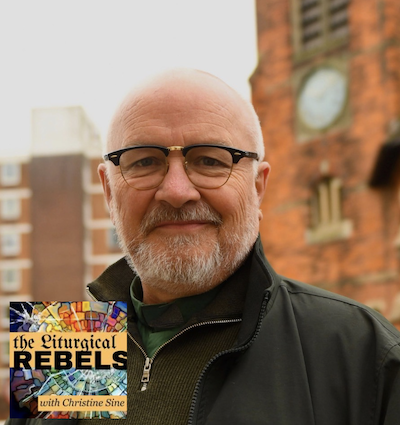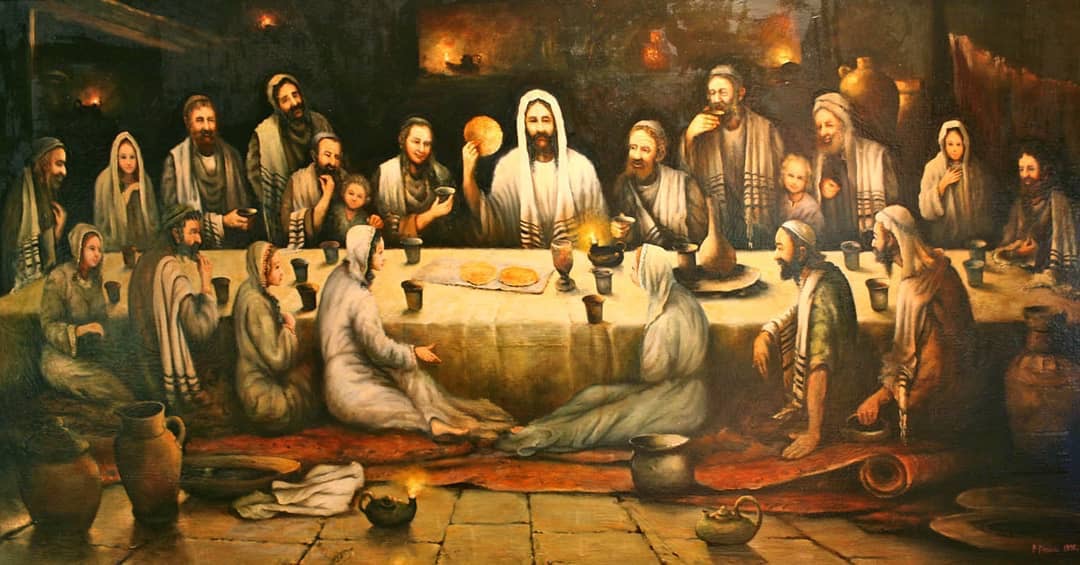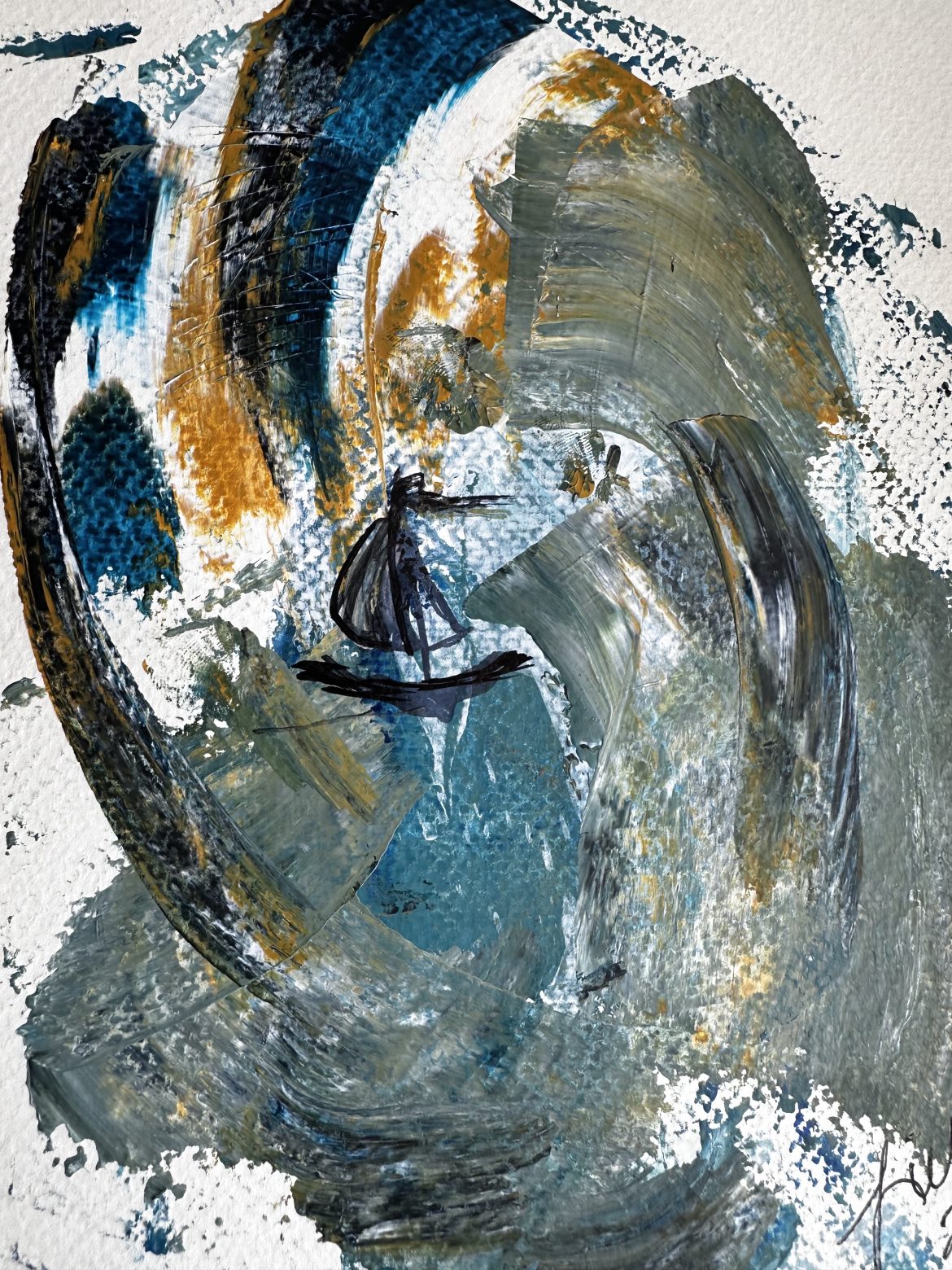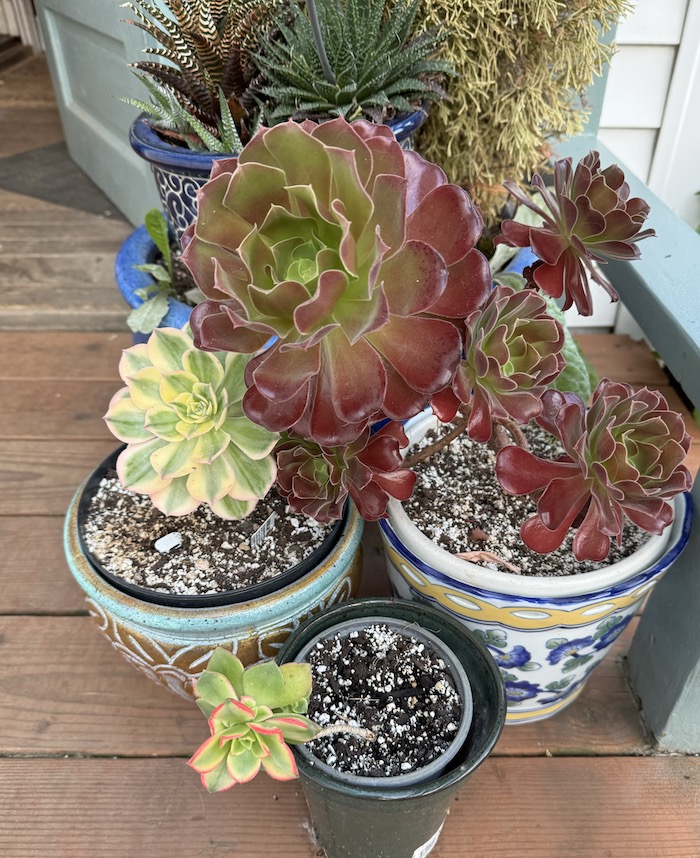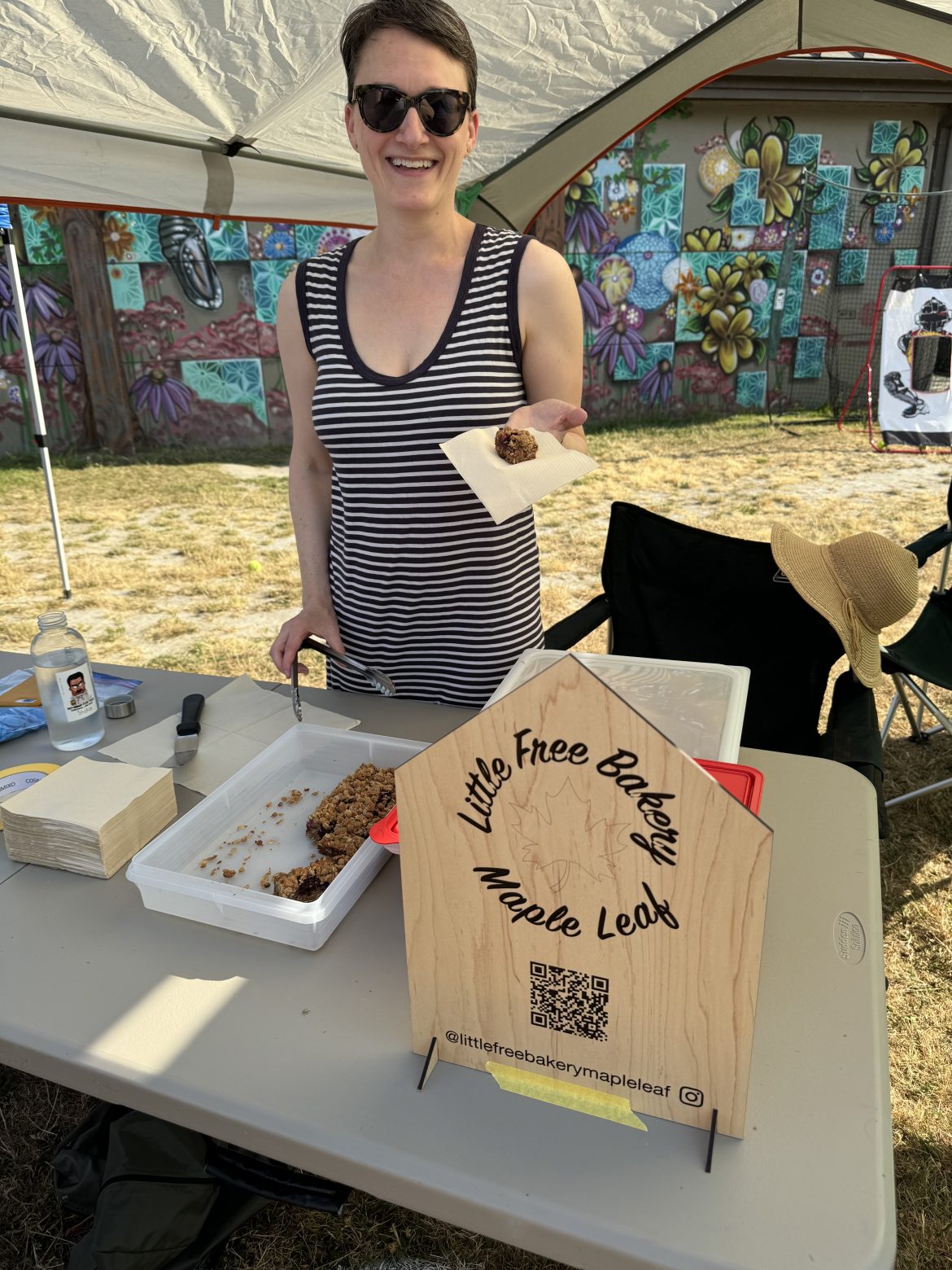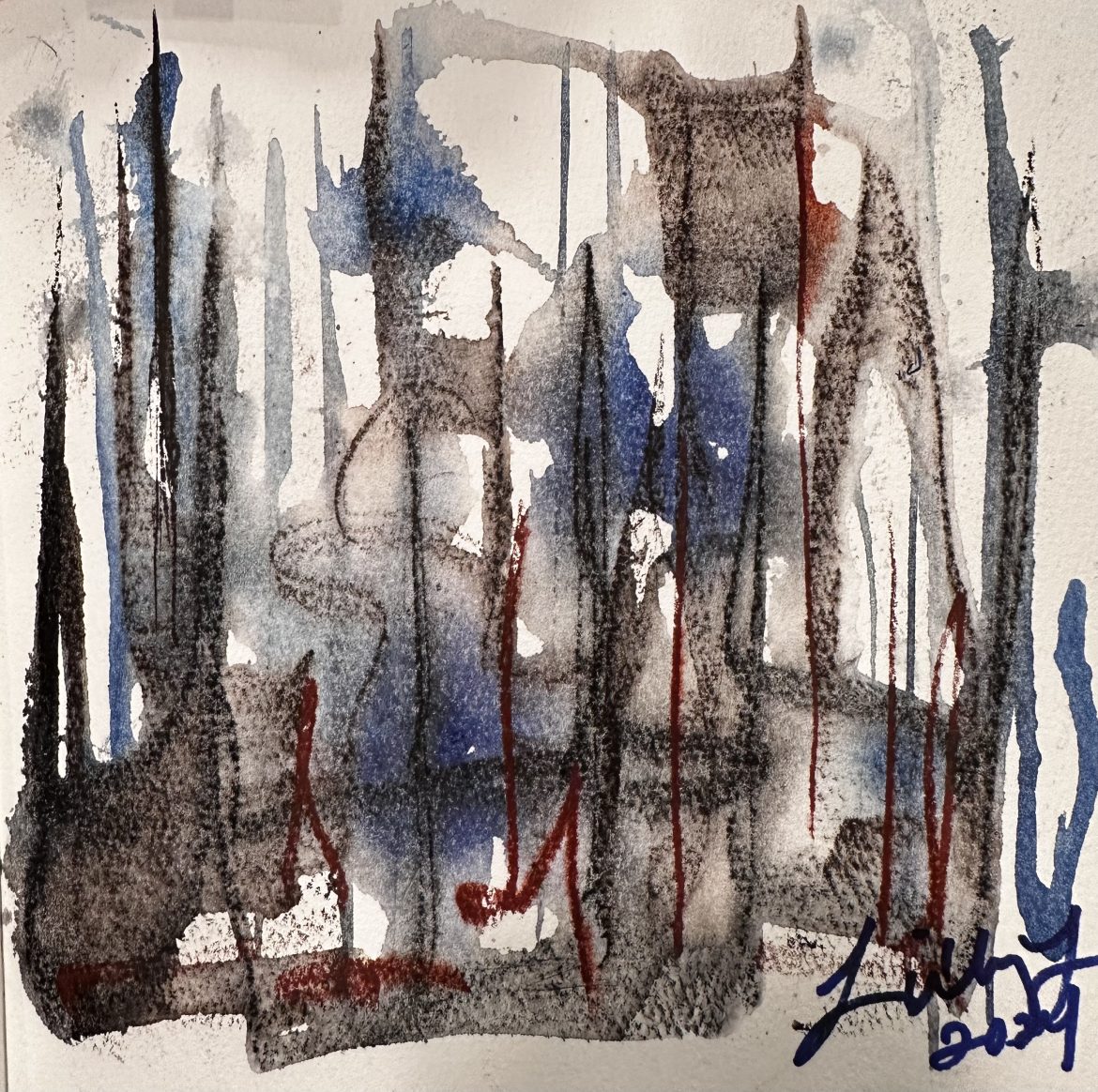In Episode 13, Martin Poole, author of ‘Church Beyond Walls,’ discusses his journey of taking spirituality out to public spaces. He shares his background as an actor and priest, and how he became dissatisfied with traditional church settings. Poole talks about his organization, Beyond, which focuses on creating public art events that provoke people to think about God. He highlights some of their projects, such as the Beach Hut Advent Calendar and the Blessing of the Surf service. Poole also offers advice for those interested in engaging in creative worship outside of traditional church settings.
Takeaways
- Taking spirituality out of traditional church settings can lead to meaningful and creative worship experiences.
- Engaging in public art events can provoke people to think about God in new and unexpected ways.
- Collaborating with people from different backgrounds and perspectives can enrich worship experiences and lead to new insights.
- Creating art installations and events in public spaces can be done with limited resources and the support of a dedicated team.
- Engaging in creative worship outside of traditional church settings can deepen one’s faith and provide opportunities for spiritual growth.
Martin Poole is currently the parish priest of St. Luke’s Prestonville in Brighton and founder of Beyond Church, an arts organisation dedicated to creating innovative arts and spirituality events and conferences www.beyondchurch.co.uk. For most of his working life he’s been a creative TV producer, travelling around the world creating brand identities and promotion campaigns for TV channels. He worked with a wide variety of clients including the BBC, SKY, ITV and Disney eventually becoming a communications strategist specialising in branding, marketing and promotion for media. He’s also been an actor, butler, construction worker, receptionist, cleaner, youth volunteer and chaplain as well as a husband and father. As the founder of Beyond he has initiated and curated hundreds of public art events on the seafront, in parks, in pubs and theatres and is the inventor of the Beach Hut Advent Calendar which ran for 11 years along Hove promenade.
He recently authored a book, Church Beyond Walls which is a description of the creation and production of some of these art events and the personal stories of those who became involved in them and their experiences of the divine through the wonders of art.
Find out more about Christine Sine on
Walking In Wonder on Substack
and on her website Godspacelight
And on social media:
Instagram
Facebook
X
by Christine Sine
Like many of us I watched the opening Olympic ceremony a couple of days ago. I was inspired by the creativity and imagination that went into this incredible display of French culture and history. I loved the way the organizers reinterpreted what an opening ceremony could look like, stretching the bounds of what had previously been considered possible. Celine Dion’s finale song and the lighting of the Olympic flame with the incorporation of the iconic Eiffel Tower was fantastic.

What I was not prepared for was the vitriolic response of many Christians who were offended by what they interpreted as a blasphemous representation of the Last Supper, contrasting it with Da Vinci’s Last Supper which for some reason is seen as the iconic depiction of this event. For those of us who believe in diversity, equality and inclusion this image if painted today might seem equally offensive. Wow! why not such outrage at the increasing poverty and violence around the world? Or for our contributions to the climate crisis? Why not shout out against the racism, sexism and abuse of those at the margins we see all around us?
I am not going to debate here whether this image was really a blasphemous representation of the last supper or not. The Olympic community says no and tells us very convincingly where the idea came from. What horrifies me is how quickly Christians respond to seeming offense with hate rather than love, unwilling to listen to other points of view or seek to bridge the divide between what they believe and what they see represented. What a fantastic opportunity this was for all of us to reach out in love and a sense of welcome to these drag queens who are often rejected and abused by society. What an opportunity for us to show love and not hate. And we missed it.
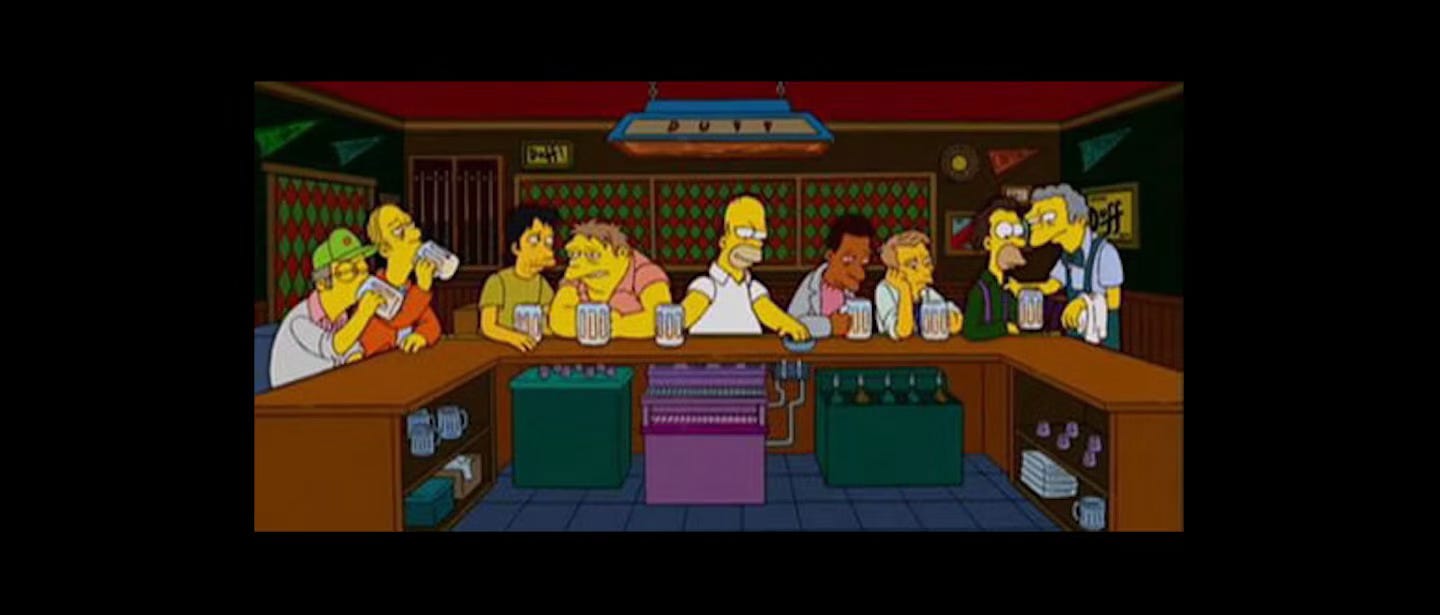
One aspect of the arguments that have raged after the event that I really appreciated were the alternative images of the Last Supper that are often depicted in popular culture. This blog post identifies 101 Pop Culture Last Suppers . The Simpson’s had a go at it; the Expendables; Sesame Street, Star Wars and Lost. It is fascinating to me how often people want to see themselves as sitting down at a banquet feast with Jesus. Maybe there is something for us to grab hold of here. How about banquet feast around the world for those who are at the margins of our society?
I love the painting by Polish artist Bohdan Piasecki above which depicts Jesus at the Last Supper surrounded by the twelve disciples, as well as women and children. Women and children have always had a place at the table with Jesus as have the abused, the abandoned and the rejected. Whether they would have been present at this last supper has often been debated by the church, but I cannot imagine that Jesus would have excluded them. We forget that many of Jesus disciples were not very acceptable in his society – Galilean fishermen, tax collectors, and healed lepers all sat at table with Jesus. Women of ill repute followed him. Children were often all around him.

This week through the posts of my friends I identified some other beautiful images that I am sure will be offensive to some because they include people often seen as outside Jesus’ circle of acceptance. Like this one that Ellen Haroutunian posted where all those at the table have Down’s syndrome. The amazing thing about Jesus and our loving Creator is that they accept everyone. The despised, the abandoned and the rejected are at the centre of the table. I bet Jesus would have embraced those drag queens if he was with us today. He would probably have sat down at that table with them and enjoyed the feast. And he would have brought a few other “unacceptable ones” with him as this image shows.

What images of Jesus sitting down at table appeal to you? Why? How could you expand your boundaries to include those who are excluded by our society?
This week was a week of celebration in our family so I’m in the slow lane for freerangefriday today. We were celebrating my dad Wilbur Sensing’s 95th birthday. Family arrived from all over arrived. We began his birthday with a picnic bbq lunch on Saturday with about 50 friends and family. The celebration continued on Sunday with relatives for lunch and watching old movies and laughing a lot. And on July 23rd, his actual birthday, my brother and his wife and my husband and son who all live here in Nashville, took dad out for dinner. It was his first time having dinner in a restaurant since mid May when he had emergency abdominal surgery. Let’s just say that birthday parties are much more fun than funerals! We all felt so much joy that Dad was no longer in hospice care and back to living! If you’d seen him in the ICU on May 31st you’d know what a miracle a steak dinner out was!
We are very grateful!
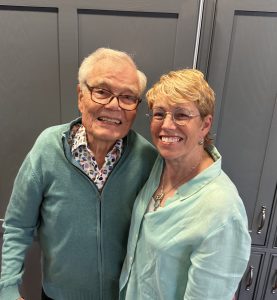
Dad and me on Tuesday Night!
What are you grateful for this week? Take some time and thank Jesus for all the good things you’ve experienced this week.
- Zinnias blooming along the driveway
Time with our son and his dog Smithers (he lives in denver and came in town to celebrate dad’s birthday)
Shopping with my sister ( She also was in town for the festivities)
Nice weather for the party
Fun with cousins and their kids
Good books and new library card
A new friend
Reading A Wrinkle in Time by Madeline L’Engle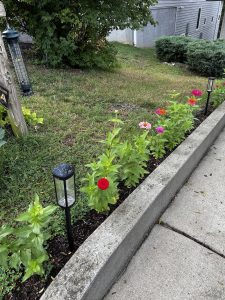
zinnias
I’ve also been rather scatter brained with all the news around who is running for the US president.
I was on a call last night with close to 150,000 white women who are planning to support a woman for president! It was the largest call in the history of zoom!. So much hope and excitement, and a realistic understanding that it’s not going to be easy to defeat hate and fear and racism.
I honestly haven’t had much hope for American politics since 2015.
Our politics has been so divisive and abusive that it’s caused families to divide, divorces to occur and churches to split.
I started grieving our country in 2015. As an enneagram 7, I could no longer reframe the situation. But Today I have hope again.
What is bringing you HOPE today?
Underneath all our emphasis on successful action, many of us suffer from a deep-seated, low self-esteem. . . . And so our actions become more an expression of fear than of inner freedom. . . .
As we keep our eyes directed at the One who says, ‘‘Do not be afraid,” we may slowly let go of our fear. We will learn to live in a world without zealously defended borders. We will be free to see the suffering of other people, free to respond not with defensiveness, but with compassion, with peace, with ourselves. Henri Nouwen
This quote leads us to the gospel for this Sunday.
In case you missed it, last week we had an interrupted Gospel lesson in Mark 6. Jesus saw that his disciples were exhausted and he attempted to take them on a retreat so they could rest. Instead, they were interrupted by the crowd that raced around the lake to find Jesus. The second part of last week’s Gospel was about what they found on the other side, when Jesus and his disciples made it back across the lake. There were the crowds again, this time seeking to be healed by Jesus.
In this week’s Gospel, we get the middle story. The feeding of the 5000 and Jesus walking on the water. We’re in John 6 rather than Mark:
JOHN 6:1-21
Some time after this, Jesus crossed to the far shore of the Sea of Galilee (that is, the Sea of Tiberias), 2 and a great crowd of people followed him because they saw the signs he had performed by healing the sick. 3 Then Jesus went up on a mountainside and sat down with his disciples. 4 The Jewish Passover Festival was near.
5 When Jesus looked up and saw a great crowd coming toward him, he said to Philip, “Where shall we buy bread for these people to eat?” 6 He asked this only to test him, for he already had in mind what he was going to do.
7 Philip answered him, “It would take more than half a year’s wages[a] to buy enough bread for each one to have a bite!”
8 Another of his disciples, Andrew, Simon Peter’s brother, spoke up, 9 “Here is a boy with five small barley loaves and two small fish, but how far will they go among so many?”
10 Jesus said, “Have the people sit down.” There was plenty of grass in that place, and they sat down (about five thousand men were there). 11 Jesus then took the loaves, gave thanks, and distributed to those who were seated as much as they wanted. He did the same with the fish.
12 When they had all had enough to eat, he said to his disciples, “Gather the pieces that are left over. Let nothing be wasted.” 13 So they gathered them and filled twelve baskets with the pieces of the five barley loaves left over by those who had eaten.
14 After the people saw the sign Jesus performed, they began to say, “Surely this is the Prophet who is to come into the world.” 15 Jesus, knowing that they intended to come and make him king by force, withdrew again to a mountain by himself.
16 When evening came, his disciples went down to the lake, 17 where they got into a boat and set off across the lake for Capernaum. By now it was dark, and Jesus had not yet joined them. 18 A strong wind was blowing and the waters grew rough. 19 When they had rowed about three or four miles,[b] they saw Jesus approaching the boat, walking on the water; and they were frightened. 20 But he said to them, “It is I; don’t be afraid.” 21 Then they were willing to take him into the boat, and immediately the boat reached the shore where they were heading.
READ this a few times…what do you notice? What does the Holy Spirit highlight for you?
I notice that Jesus knows that the people are hungry and he already has a plan for how to feed them all.
That gives me hope! Jesus already has a plan! And Jesus knows what we are hungry for!
I’m hungry for peace, and justice and rest from politics, war and injustice!
I notice that Jesus has no interest in being a King. He has no interest in political power. And he sends his disciples away before this gets out of hand. Is it because he knows they are still exhausted? Or is it to protect them because he knows that some of them want him to be a political leader too?
What is is about us that we think we need power and control?
Why are we so afraid?
Read Henri Nouwen’s quote again!
Underneath all our emphasis on successful action, many of us suffer from a deep-seated, low self-esteem. . . . And so our actions become more an expression of fear than of inner freedom. . . .
As we keep our eyes directed at the One who says, ‘‘Do not be afraid,” we may slowly let go of our fear. We will learn to live in a world without zealously defended borders. We will be free to see the suffering of other people, free to respond not with defensiveness, but with compassion, with peace, with ourselves. Henri Nouwen
We really do need to know how much we are loved!
We need to know and remember that we are “God’s best idea” Dr. Sara Sosa
When we know and believe we are loved by the Creator of the entire universe, we don’t have to be afraid of other people and other ideas.
I know that I need to remember that even in the storm, even when the boat is rocking and seas are high, Jesus tells us not to be afraid! Jesus gets in the boat with us!
How can you experience more hope, gratefulness and love this week?
What small things can you do to show love to someone who needs it?
I think I’m going to make more cookies for my neighbors just to say I care! And to meet some of the newer neighbors whom I haven’t met yet! This might be my new weekly or at least monthly practice. I am also going to be making more phone calls to check in with friends who are in rocking boats right now. I’m going to keep reading books rather than looking at my phone at night and keep using that new library card rather than my Amazon card! I hope you have a wonderful weekend! Remember that you have permission to REST! #restisHoly
Dear friends, let us love one another, for love comes from God. Everyone who loves has been born of God and knows God. 8 Whoever does not love does not know God, because God is love. 9 This is how God showed his love among us: He sent his one and only Son into the world that we might live through him. 10 This is love: not that we loved God, but that he loved us and sent his Son as an atoning sacrifice for our sins. 11 Dear friends, since God so loved us, we also ought to love one another. 12 No one has ever seen God; but if we love one another, God lives in us and his love is made complete in us.
I John 4
Another crazy week! We certainly do live in interesting times. As Joe Biden steps out of the race and Kamala Harris steps in to take the reins of Democrats for the presidential campaign our heads are spinning. These events weigh on all of us. Whether we see it as good or bad news, I know that the coming season of vitriolic attack from both sides will be draining and pray for God’s peace and wisdom to rest on all those who are involved.
For me this week has been overshadowed by my brother Nick’s declining health. As many of you know he is in the last stages of malignant melanoma. It is hard to be half a world away at a time like this. I am very grateful for Zoom and WhatsApp which help keep me in touch. I am also very grateful for Tom’s supportiveness, for friends that pray and for my garden which brings me peace every time I walk around it. This week my Aeoniums are flowering on my back step. They make me smile every time I walk past.
I am also grateful for the fact that that Goldie’s wound is healing and she finally has her hood off. Yesterday she ran around the house and yard like a mad thing obviously delighted to have her freedom from the dreaded cone of shame.
One of the delights of my week was attending the Maple Leaf ice cream social on Wednesday. I loved meeting Beth Altman and hearing about her Little Free Bakery, which I talked about in my Meditation Monday: Freely You Have Received, Freely Give. She places delicious desserts in her free bakery, a little like the free libraries that dot our neighbourhood and then posts on instagram to let her patrons know what is currently on offer. The generosity of people in our neighbourhood never ceases to amaze me. It restores my belief in the goodness God has placed within all of us. I may not become part of the Little Free bakery movement, but I do like to share and my post includes 2 of my favourite recipes to make from garden produce at this time of year.
Monday was Mary Magdalene’s Feast Day so I revisited my Godspace post Standing With Mary Magdalene And All The Women of the World because in many ways I feel that the ways she has been maligned and misrepresented throughout history is so much what still happens to women today. Many people are more willing to see women as prostitutes rather than leaders.
Carol Dixon provided a delightful post Singing the Psalms yesterday. As she says Psalms are a wonderful way to worship God and there is a psalm for every season. Lilly Lewin’s Freerange Friday: Jesus Loves Us In the Interruptions is also worthy of a good read. Who of us isn’t plagued by interruptions? I love her question: What kind of REST do you need this week?
Last week we launched the 12th episode of The Liturgical Rebels podcast with a fascinating interview with spiritual director, pastor, and author Kathy Escobar. Don’t miss this important episode and those that have gone before it. The summer is a great time to catch up on your listening. I was going to list my favourites, but have enjoyed interviewing all my guests so much that it is hard to choose – from artists, like iconographer Kelly Latimore and block print creator Kreg Yingst, to theologian Brian McLaren and poet Drew Jackson, and worship curators Mark Pierson and Lilly Lewin, I think all the episodes are worth listening to and some of you I know have listened more than once to selected guests.
Next week Martin Poole, another very creative worship curator will be my guest, followed by Brian Edgar, Professor of Theological Studies at Asbury and author of a fascinating book The God Who Plays. After that I will move into a Celtic theme as a lead up for the beginning of Celtic Advent on November 15th. I already have theologian John Phillip Newell and musician Jeff Johnson as well as Christine Valters Paintner and am still pursuing a Celtic artist and a poet for this series. I am very excited about where the podcast is going and hope that you are enjoying the interviews. Please let me know if you have any feedback that will help us continue to shape the podcast.
My Celtic theme will be reflected in other offerings for August to December. I am delighted with the progress I am making with my book Celtic Advent: Following an Unfamiliar Path. Each week will not only highlight a different Celtic saint but will also have a different theme. Here is the tentative outline:
Brendan and Holy Wanderings
Brigid and Kingdom Hospitality
Columba Welcoming Community
Hilda Embracing the Circle of Creation
Cuthbert Creating a Thin Space
I love Scottish theologian Prof John Macquarrie’s observation that ‘the Celt was very much a God-intoxicated person whose life was embraced on all sides by the divine Being.” I long for that same intoxication and intimacy with God where the awareness of God is present in every moment and every thing. There seems no better season than Advent to explore this deeper intimacy and spiritual intoxication and it is my hope that you too will become intoxicated with the presence of God as we read together.
As well as that I am planning a couple of online retreats for the season September to Christmas. Save the Dates: Introduction to Celtic Christianity on September 7th; Ready for Celtic Advent on November 16th. It will be a very busy but fun season, as these retreats are always very interactive not just full of information but also creative exercises and prayers. I am really looking forward to both creating and facilitating these. It is my hope that the Advent book will be available by the Celtic seminar in September.
A big thank you to those who have become paid subscribers on Substack https://substack.com/@chrissine . As I mentioned last week, this really helps me broaden the array of resources we make available, many of which are free. It will also provide you with a 20% discount on the webinar cost. At this stage the only regular “subscriber only” post is the audio for my Meditation Monday. However there will be more such input in the future.
The upheaval that we feel around the world at the moment is challenging for everyone. I pray that you are able to find places of rest and peace in the midst of it. Perhaps you would like to pray this prayer with me.
Lord Jesus Christ,
Grant me patience,
As you are patient.
Waiting, hoping, expecting,
Never forcing.
Lord Jesus Christ
Grant me kindness,
As you are kind
Generous, compassionate, gentle,
Always overflowing with care.
Lord Jesus Christ,
Grant me love,
As you are loving,
Trusting, enduring, sacrificing yourself,
Ever delighting in truth.
Lord Jesus Christ,
Grant me life,
As you would have me live,
Journeying together with all peoples
Into wholeness,
And the wonder of your eternal world.
Christine Sine
by Carol Dixon
Reading Christine’s Monday Meditation of the Summer Solstice this week immediately brought to my mind the beginning of Psalm 19 which always reminds me of summer, ‘The heavens declare the glory of God’
The heavens declare the glory of God;
the skies proclaim the work of his hands.
2 Day after day they pour forth speech;
night after night they reveal knowledge.
3 They have no speech, they use no words;
no sound is heard from them.
4 Yet their voice[b] goes out into all the earth,
their words to the ends of the world.
In the heavens God has pitched a tent for the sun.
5 It is like a bridegroom coming out of his chamber,
like a champion rejoicing to run his course.
6 It rises at one end of the heavens
and makes its circuit to the other;
nothing is deprived of its warmth.
The Psalms are a wonderful way to worship God and there‘s a Psalm for all Seasons. A Roman Catholic friend of mine always lets me know how she is feeling when we say goodbye to each other. If she says ‘Well, I’m off for a romp through the Psalms’ I know that she’s feeling on top of the world. However if she leaves saying ‘I’m away for a wallow in the Psalms’ I knew that things are not going too well. The Psalms can really help us to express our feelings. There are Psalms for every mood – joyful, sorrowful, angry, bewildered, you name it.
As a child I was brought up on the Psalms – first of all at the Scottish Presbyterian church where my dad took me each Sunday, then at St James’s English Presbyterian church when the 2 churches amalgamated when I was 7 (& where my husband and I were married 54 years ago this July.) In both churches the second hymn was always a metrical Psalm so I grew to love them and still do despite the dodgy poetry in some of them. If I was asked to name my favourite psalm I would find it difficult to do so. I like my dad’s favourite – Psalm 121 ‘I to the hills will lift mine eyes, from whence doth come mine aid’ and I also love the rousing gloriousness of the Psalm that was sung at every communion service in St James’s – Psalm 24 ‘Ye gates lift up your heads on high’ to the magnificent tune St George’s Edinburgh.
https://youtu.be/BopDC1-J618?si=Oenl0-VfKcjdiPQQ
Psalm 24 is one of the 73 Psalms attributed to David, the shepherd boy who became king and was used as a Psalm of Ascents as the people processed up the hill to Jerusalem carrying the Ark and in later processions to Solomon’s beautiful Temple. The hymn we sing is only the last few verses. Here’s the full Psalm.
Psalm 24 A Psalm of David. The earth is the Lord’s, and everything in it,
the world, and all who live in it;
2 for he founded it on the seas
and established it on the waters.
3 Who may ascend the mountain of the Lord?
Who may stand in his holy place?
4 The one who has clean hands and a pure heart,
who does not trust in an idol
or swear by a false god.[a]
5 They will receive blessing from the Lord
and vindication from God their Saviour.
6 Such is the generation of those who seek him,
who seek your face, God of Jacob.[b][c]
7 Lift up your heads, you gates;
be lifted up, you ancient doors,
that the King of glory may come in.
8 Who is this King of glory?
The Lord strong and mighty,
the Lord mighty in battle.
9 Lift up your heads, you gates;
lift them up, you ancient doors,
that the King of glory may come in.
10 Who is he, this King of glory?
The Lord Almighty—
he is the King of glory

Between the ages of 8 and 11 I attended a Church of England Junior School and when we went to church on Ash Wednesday and other feast days I was always fascinated by the punctuation marks in the Psalm chants which were chanted antiphonally. Sadly I never really got the hang of and was so busy thinking of the punctuation marks I didn’t take in the words though some of my Anglican friends assure me they are easy to sing when you know how, as I’m sure they are: Psalm 19 verse 4 says:
The law of the Lord is perfect and re- l vives the soul;
the testimony of the Lord is l sure + and gives wisdom + to the innocent.
The statutes of the Lord are just and re- l joice the l heart;
The commandment of the Lord is l clear + and gives l light + to the l eyes. [Psalm 19 v 4]
In the 1990s the singing group which I led at my church often sang modern versions of the Psalms – ‘How lovely is thy dwelling place O Lord of hosts’ from Songs of Fellowship (Psalm 84) was a popular one and we all enjoyed singing Psalm 150,’ Praise him on the trumpet, the psaltery and harp’ – always the first choice if we had a singaround.
https://youtu.be/NU4GPtuM_GI?si=R5-N_7r1dJRway22
Another beautiful psalm is Psalm 8
Psalm 8 For the director of music.] A psalm of David.
1 Lord, our Lord,
how majestic is your name in all the earth!
You have set your glory
in the heavens.
2 Through the praise of children and infants
you have established a stronghold against your enemies,
to silence the foe and the avenger.
3 When I consider your heavens,
the work of your fingers,
the moon and the stars,
which you have set in place,
4 what is humankind that you are mindful of them,
human beings that you care for them?[c]
5 You have made them[d] a little lower than the angels[e]
and crowned them[f] with glory and honor.
6 You made them rulers over the works of your hands;
you put everything under their[g] feet:
7 all flocks and herds,
and the animals of the wild,
8 the birds in the sky,
and the fish in the sea,
all that swim the paths of the seas.
9 Lord, our Lord,
how majestic is your name in all the earth!
The hymn I most associate with it is’ How Great thou art’ which develops the theme to include Jesus, our Saviour and Lord of heaven.
These days as I have grown older with more health issues I have found that verses from Psalm 71 are a great encouragement:
Psalm 71 (selected verses) – The Prayer of an Elderly Person
1 Lord, I have come to you for protection;
never let me be defeated!
2 Because you are righteous,
help me and rescue me.
Listen to me and save me!
3 Be my secure shelter
and a strong fortress[a] to protect me;
you are my refuge and defence..
5 Sovereign Lord, I put my hope in you;
I have trusted in you since I was young.
6 I have relied on you all my life;
you have protected[b] me since the day I was born.
I will always praise you.
7 My life has been an example to many,
because you have been my strong defender.
8 All day long I praise you
and proclaim your glory.
9 Do not reject me now that I am old;
do not abandon me now that I am feeble.
Don’t stay so far away, O God;
my God, hurry to my aid!
14 I will always put my hope in you;
I will praise you more and more.
15 I will tell of your goodness;
all day long I will speak of your salvation,
though it is more than I can understand.
16 I will go in the strength of the Lord God;
I will proclaim your goodness, yours alone.
17 You have taught me ever since I was young,
and I still tell of your wonderful acts.
18 Now that I am old and my hair is grey,
do not abandon me, O God!
Be with me while I proclaim your power and might
to all generations to come.
19 Your righteousness, God, reaches the skies.
You have done great things;
there is no one like you..
22 I will indeed praise you with the harp;
I will praise your faithfulness, my God.
On my harp I will play hymns to you,
the Holy One of Israel.
23 I will shout for joy as I play for you;
with my whole being I will sing
because you have saved me.
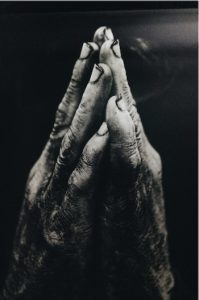
Photo:Nathan Dumlao, Unsplash
It would be remiss of me not to mention the Psalm beloved of all ages which was voted as the nation’s favourite in the UK a couple of years ago. It was also a favourite of my mother and the late Queen Elizabeth II). I’m sure you can guess what it is – Psalm 23. We all have our own favourite version of it – the tradition words set to the tune Crimond, or to Brother James’s Air and the lovely song written by Stuart Townend (also known as And I will trust in him alone) is loved by many. My own personal choice is by Brian Bonneville – The Lord is my shepherd.
https://youtu.be/Kor3IjrTd58?si=7P8ghmXLxTAgvPbc
One of the first hymns I ever wrote was taken from Psalm 46 God is our refuge and strength, a very present help in trouble which was written after I had a difficult spell in hospital and God gave me the words of the psalmist to pray when I had none of my own. (NB in the music there’s a short musical phrase between each verse and at end before final words)
God is our refuge and strength,
An ever-present help in trouble.
Though the mountains fall into the heart of the sea,
There is a river of praise
Whose streams make glad the city of God,
The holy place where the Most High dwells.
God is within her.
God is our refuge and strength.
Come, see the works of the LORD,
He makes the wars to cease on the earth.
He breaks the bow and shatters the spear;
he burns the shields with fire.
God is our refuge and strength.
“Be still, and know I am God;
I will be lifted up in the nations.”
The LORD Almighty is with us;
Yet we shall not fear.
God is our refuge and strength.
He is our strong tower.
God is our refuge and strength.
God is our refuge and strength.
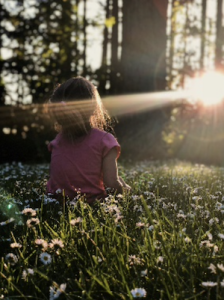
Photo: Melissa Askew Unsplash
Some of the modern paraphrases of the Psalms can be really evocative too. Psalm 116 written by Revd Carla Grosch – Miller, an American minister in my church in her book ‘Psalms Redux – prayers and poems in the Psalms’ is a lovely way to pray.
God, You are my God, You alone.
Drowning,
Your hand rescues me.
Wounded,
Your balm soothes me.
Terrified,
Your peace encompasses me.
Lost,
Your love finds me.
Your healing love weaves
The tattered pieces of my life
Into a garment of joy.
You gave me life.
How may I repay you but
Live it – joyfully, gratefully,
Sharing your love that has made me whole,
Singing of your goodness in the land of the living
And resting in peace –
Your praises on my lips.
©Carla Grosh-Miller
To return to where I started – my dad’s favourite Psalm no. 121. I love the original metrical version (see blessing below) but a new paraphrase of it is equally beautiful. I lift my eyes to the quiet hills.https://youtu.be/N8QSwakKNwA?si=L8B-9rKrrV8GEYtD
There are so many wonderful Psalms -, Psalm 40 ‘I waited for the Lord and he answered me’, Psalm 139 ‘Lord you search me and know me’ to name but two. I hope you have enjoyed my romp (and wallow) through some of my favourites. You might like to think of your own favourites – sing them and meditate on what they say to you today or write one of your own and sing it!
A blessing (Psalm 121 – traditional)
https://youtu.be/PJsDa-6I90Q?si=AVTeS31R3UdbZF26
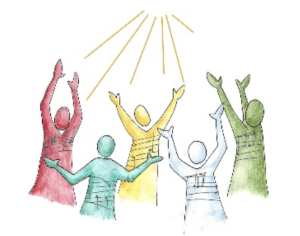
Featured photo: Dewang Gupta Unsplash
by Christine Sine
Seattle just set a record for the number of 80+F days in a row. The beauty of these hot dry days inspires me not just to get out into the garden but also to get into the kitchen and use the abundance of produce ready to be harvested. Tomatoes, squash and basil are proliferating, potatoes, onions and garlic have been harvested, and we there is an abundance of Swiss Chard such as I have never seen before.
Cooking, like gardening, is relaxing for me, though I don’t always know what to do with the results of my cooking. I often make far more than we can possibly use. I don’t want to eat it all. Some of it goes into the freezer, but there always seems to be far more than we can possibly consumer.
When I attended the summer ice cream social at our local park on Wednesday I discovered a possible answer. Beth Altman’s stall advertised her little free bakery, which grew out of her love for cookbooks, recipes and baking. She places delicious desserts in her free bakery, a little like the free libraries that dot our neighbourhood and then posts on instagram. to let her patrons know what is currently on offer. What a wonderful way to share our love with neighbours I thought as I munched her free berry slice.
Beth is part of a small, but I suspect growing movement that provides regular treats that can become neighborhoods together. The moment started with Magnolia resident Lanne Stauffer who, about three years ago, turned her little free library into a little free bakery. The idea has caught on and there are now six or seven around Seattle. In Redmond, Washington, Deborah Voll decided to add a dog treat box at the bottom so not only does she have treats for humans, but also treats for furry friends. As well as that her box is stocked with books, so there’s something for everyone. Now all she needs is a pot of coffee and a seat.
You can read more about these generous women and their love for their neighborhoods on the PCC Markets Sound Consumer and and KUOW.org stories.
I don’t think I will join the free bakery movement any time soon but I do love to share. My cooking efforts were the centre of our community meal last week. We love to do hospitality at this season too and at Christmas I send out boxes of Christmas goodies to friends and relatives around the country. I also love to share recipes and the results of my creative cooking much of which featured in The Godspacelight Community Cookbook . We are all meant to be generous. The bounty of God’s good earth is meant to be shared. “Freely you have received, freely give.”

The kingdom of God is, I believe, the ultimate place of hospitality and we are meant to model it now. It is the place where friend and stranger from different cultures, ages and social strata all sit together at a great banquet feast, just as we have done with so many over the last month. It is a place where there is much fun and laughter and celebration, where barriers of class, culture and misunderstanding are broken down. Where fear becomes love, indifference becomes caring and enemies become friends. It is a place where hospitality and welcome beckon all of us towards healing and wholeness. Maybe there will be little free bakeries dotted all around.
It is this kind of feast that I think is previewed in Isaiah 25:6
In Jerusalem, the Lord of Heaven’s Armies
will spread a wonderful feast
for all the people of the world.
It will be a delicious banquet
with clear, well-aged wine and choice meat.
Years ago, I remember seeing a painting that supposedly depicted this banquet feast of God. I say supposedly because it was a very formal dinner table set with beautiful plates and lots of silverware. But there were no people at the table and, to be honest, I cannot imagine most of my friends and acquaintances feeling comfortable with such formality anyway.
I think the kingdom banquet feast will be a place where not only do all feel welcomed but all feel honored and respected. None of us will feel out of place because we don’t know which utensils to use for which course. None of us will feel conspicuous because we don’t eat meat or dairy or gluten. There will be something for all of us to enjoy. And who will be serving the meal at that feast? Jesus our great and glorious servant king will.
Some of the last and most enduring images we have of Jesus combine hospitality and service – washing feet at the last supper, cooking breakfast on the beach for his disciples after his resurrection – hospitality and servanthood, the culture of the kingdom, the outpouring of God’s love through relationship, the rich and enduring signs of welcome that we have experienced time and again throughout our lives.
Here are a couple of my favourite recipes which I made this week. Have fun and I would love to hear about what you enjoy doing with the bounty from your garden (or from the supermarket).
Hunza Pie
A great vegetarian dish for a picnic or camping trip. the vegetable mix can be adapted depending on what vegetables you have available and what you like.
INGREDIENTS:
– PASTRY:
2 cups whole wheat flour
1 cup wheatgerm
1 cup golden flax meal
6 ounces margarine or butter
1/2 cup milk or water
1 teaspoon vegetable salt
FILLING
25 stalks Swiss Chard or other garden greens ,leaves coarsely chopped
2 1/2 lb potatoes
1 1/4 lb cottage cheese
1 teaspoon mixed herbs (I like Italian herb mix or a mixture of fresh thyme, oregano and basil)
1 teaspoon salt
1 large onion, chopped
1 teaspoon dried basil, or 1/4 cup fresh chopped
2 cloves garlic, minced
1 cup mushrooms, diced
1 cup squash (e.g. zucchini), chopped or 1 cup broccoli
METHOD:
Pastry:
Sift flour and salt into bowl. add husks in sifter to flour fold in wheatgerm and flax meal. Rub in margarine until mixture resembles coarse breadcrumbs. Mix with enough water to make a stiff dough. Knead lightly.
Cut pastry into 4 pieces. Cover and place in refrigerator for 20 minutes. This is a very important step. I didn’t do it last time I made this recipe and I had great difficulty getting the pastry to hold together.
Roll out 1/4 of pastry on floured surface and place in base and up sides of a 9 inch pie dish. Do same with second pastry section. Spoon over cold vegetable mixture. Brush edge of pastry with water. Roll out remaining pastry in 2 pieces and place over pies. Trim edge with a sharp knife. Make slits in top.
Bake in a hot oven (400F) for 15 minutes then reduce heat to 375 and cook further 15 – 20 minutes until golden brown.
Filling:
Peel potatoes and cut into cubes. Cook in salted water until tender. Drain. Cook onions in a medium skillet with 1 tablespoon oil until brown. Add chopped mushrooms and squash. Cook a further 5 minutes. Add chard, garlic and herbs. Cook a further 5 minutes. Add cottage cheese and salt. Allow to cool before you spoon it into the pastry case.
SERVINGS: This recipe makes 2 pies, 8 servings from each pie
We love to eat it with hot sauce together with a tomato, basil, squash and mozzarella salad or with a quinoa salad.
Dried Tomato, Olive Tapenade
I adapted this recipe from one I found in the Australian Women’s Weekly Tomato Cookbook, one of the best places for tomato recipes I have ever found. Also I use tomatoes I dry from our garden rather than bought ones which are always soaking in oil that then needs to be discarded. The recipe is also at its best when the basil and oregano are picked straight from the garden.
- 1 cup drained sun-dried tomatoes
- 2 tablespoon olive oil
- 1 tablespoon red wine vinegar
- 2 cloves garlic
- 1 tablespoon chopped fresh oregano leaves
- 1/2 cup chopped fresh basil
- 1/2 teaspoon cracked black peppercorns
- 2/3 cup pecans
- 1 cup pitted kalamata olives
Process all ingredients until smooth. Spoon tapenade into cold sterilized jars; seal immediately or store in the refrigerator (stores 4-6 weeks).
We don’t like interruptions! We like everything to go smoothly and on our time schedule. Today, many folks woke up to delayed and canceled appointments and flights due to a computer glitch. I always say, ” We like technology when it works!” I just heard from my friend Ginny who has been organizing a large youth event this week asking for prayer. Many of her groups are stranded due to plane flights being canceled. Not what was on anyone’s schedule after a long week! And after a great time of learning and worship, when they are all exhausted, leaders must re-imagine what to do next! Do we see interruptions as gifts or as curses? How do we react when things don’t go as planned?
This week’s Gospel reading is actually interrupted and about interrupted plans.
Mark 6:30-34, 53-56
6:30 The apostles gathered around Jesus and told him all that they had done and taught.
6:31 He said to them, “Come away to a deserted place all by yourselves and rest a while.” For many were coming and going, and they had no leisure even to eat.
6:32 And they went away in the boat to a deserted place by themselves.
6:33 Now many saw them going and recognized them, and they hurried there on foot from all the towns and arrived ahead of them.
6:34 As he went ashore, he saw a great crowd, and he had compassion for them, because they were like sheep without a shepherd, and he began to teach them many things.6:53 When they had crossed over, they came to land at Gennesaret and moored the boat.
6:54 When they got out of the boat, people at once recognized him
6:55 and rushed about that whole region and began to bring the sick on mats to wherever they heard he was.
6:56 And wherever he went, into villages or cities or farms, they laid the sick in the marketplaces and begged him that they might touch even the fringe of his cloak, and all who touched it were healed.
The disciples have had an incredible journey doing the things that Jesus sent them out to do two by two. But as I’ve said all summer about my dad’s recovery, ” We love miracles, but miracles are exhausting! ” and Jesus knows that these people need a break. They need to take time to process what just happened and all that God did in and through them and they need time to REALLY REST and just BE!
Instead, the crowd follows them and instead of a retreat with Jesus, they get bombarded with lots of people who have lots of needs! Especially the need for food! I would have been totally angry with this interruption! I wouldn’t have had compassion on the crowd. I would have resented the crowd. Thus, I really need Jesus to help me love as he loves, with compassion! I need love and compassion for my self and the people around me when plans don’t go my way.
And honestly, I have needed Jesus to do this for me A LOT THIS WEEK! I felt I was just getting some margin back in my life after 3 months of emotional roller coaster with my dad in hospice and my husband having a heart issue, when the shooting took place on Saturday night. An assassination attempt on the former president… one more gun violence incident in our crazy country, one more mass shooting event, but this one with even more dire consequences. Gun violence and political violence of any kind is horrific. Social media of all kinds went crazy. My peaceful mindset was totally interrupted by fear, stress and anxiety.
How do we find peace and rest when our plans are interrupted?
What do we do when things don’t go our way? or things add to our stress and anxiety?
I got outside and dug in the dirt. I called a friend and chatted about how I was feeling. I owned my feelings of grief, despair, fear and worry. I did some journaling and I painted out my tears and fears.
The Lectionary interrupts the story. We don’t read about the feeding of the five thousand or the disciples leaving to cross the lake and being interrupted by what they thought was a ghost! They’d all witnessed an amazing miracle with the multiplication of bread and fish! and THEN they experienced Jesus walking to them on the water!
Take courage! It is I. Don’t be afraid.” JESUS Then he climbed into the boat with them, and the wind died down. They were completely amazed!
We love miracles, but miracles are exhausting! The roller coaster of emotions of the day! I can totally imagine they felt exhausted after all of this! They really need a break!
But instead they get another crowd! Another group of people who surround them and want to be healed by Jesus! Jesus heals the people. But notice that Jesus doesn’t stop them from running around. They ran around the lake to find him. And now they run from town to town to find healing. He doesn’t heal their running. My husband Rob noticed this on Tuesday during our Lectio Divina process with our house church. Jesus heals illnesses and demon possession, but it’s like he expects us to notice our own running about. Like the monastics of old, we need to notice and slow down and pay attention in order to not be exhausted all the time! In order to have margin, we must seek it ourselves, because the crowds will always be running and people and events will always interrupt us!
What speaks to you today? What is the Holy Spirit highlighting for you?
What do you notice from the passage that you didn’t notice before?
What questions come up for you as you listened to the passage?
As you come to this text, what are you in need of from Jesus? REST, PEACE, COMPASSION, SHEPHERDING, CERTAINTY, HEALING? What else? Talk to Jesus about where you are and how you are feeling.
Jesus said to them, “Come away to a deserted place all by yourselves and rest a while.” For many were coming and going, and they had no leisure even to eat. What kind of REST do you need this week?
The news of the political violence has filled our internet pages this week. Take time to be with your feelings and emotions. Anger, grief, worry, fear, frustration…what else? Talk to Jesus about this.
Here are some things to ponder:
“You have heard that it was said, ‘Love your neighbor[i] and hate your enemy.’ 44 But I tell you, love your enemies and pray for those who persecute you, 45 that you may be children of your Father in heaven. JESUS
The greatest challenge of the day is: How to bring about a revolution of the heart, a revolution which has to start with each one of us. Dorothy Day
I think the only choice that will enable us to hold to our vision. . . is one that abandons the concept of naming enemies and adopts a concept familiar to the nonviolent tradition: naming behavior that is oppressive…Barbara Deming
Nonviolence is not inaction. It is not discussion. It is not for the timid or weak…Nonviolence is hard work. It is the willingness to sacrifice. It is the patience to win. Cesar Chavez
Violence just hurts those who are already hurt… Instead of exposing the brutality of the oppressor, it justifies it. Cesar Chavez
Nonviolence is the answer to the crucial political and moral questions of our time; the need for mankind to overcome oppression and violence without resorting to oppression and violence.
Martin Luther King Jr (1929-1968)
This prayer is from the Catholic Health Association found on Diana Butler Bass’s Newsletter
“Our God will judge between the nations and will settle disputes for many peoples.
They will beat their swords into plowshares and their spears into pruning hooks.
Nation will not take up sword against nation, nor will they train for war anymore.”
Isaiah 2:4
God who is beyond politics and nations,
Christ who transcends the power of violence,
Holy Spirit who animates all people,
Be with us in this moment of violence, division, and turmoil.
Transform our rage and hate that we might see our brothers and sisters with your eyes.
Break our hearts of stone, give us hearts of love and understanding that your peace might prevail. Amen.
LISTEN : REST
PEACE
This is the prayer we close with at our house church each week. It helps me everyday:
CLOSING PRAYER: Lord! Give us grace today to love as you love. Help us to love with extravagance. Give us hope today for ourselves and others. Heal our hurts and our hearts today, So we can serve and help those around us. Help us to know that you are enough. And help us live today and everyday in thankfulness. For all you’ve done and for all you bless us with. In the Name of the Father, the Son, and the Holy Spirit. AMEN.
Give yourself lots of grace this week. Take time to rest. Take time to call a friend, dig in the dirt, get outside for a walk or a swim or even a picnic. Watch for the gifts in the interruptions! Watch for the God surprises along the way. Let Jesus wrap you in his great love and show you his endless compassion. We are all sheep and we need the Good Shepherd. AMEN
©lillylewin and freerangeworship.com
As an Amazon Associate, I receive a small amount for purchases made through appropriate links.
Thank you for supporting Godspace in this way.
When referencing or quoting Godspace Light, please be sure to include the Author (Christine Sine unless otherwise noted), the Title of the article or resource, the Source link where appropriate, and ©Godspacelight.com. Thank you!

